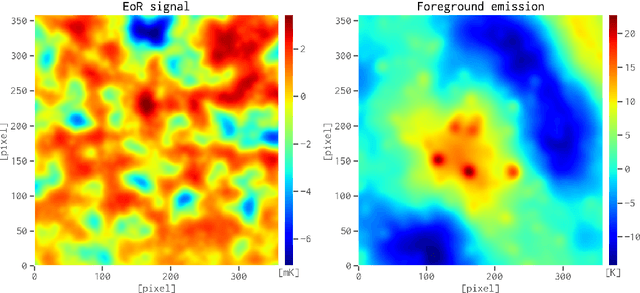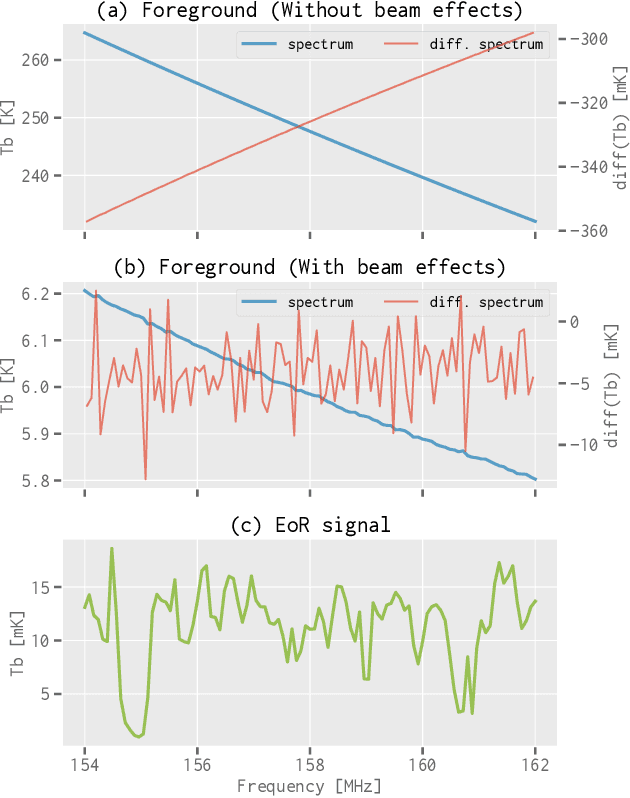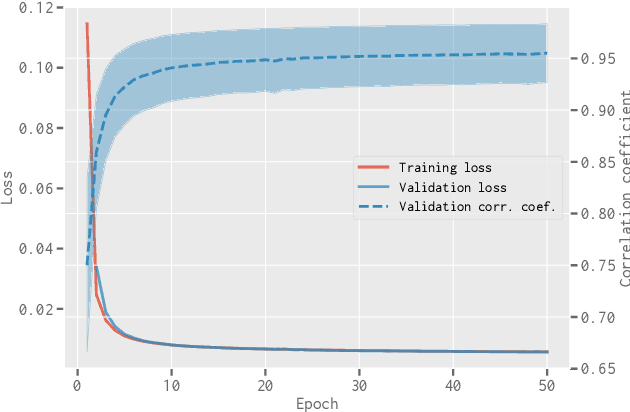Ruimin Zhu
Multi-sense Definition Modeling using Word Sense Decompositions
Sep 19, 2019



Abstract:Word embeddings capture syntactic and semantic information about words. Definition modeling aims to make the semantic content in each embedding explicit, by outputting a natural language definition based on the embedding. However, existing definition models are limited in their ability to generate accurate definitions for different senses of the same word. In this paper, we introduce a new method that enables definition modeling for multiple senses. We show how a Gumble-Softmax approach outperforms baselines at matching sense-specific embeddings to definitions during training. In experiments, our multi-sense definition model improves recall over a state-of-the-art single-sense definition model by a factor of three, without harming precision.
Separating the EoR Signal with a Convolutional Denoising Autoencoder: A Deep-learning-based Method
Mar 14, 2019



Abstract:When applying the foreground removal methods to uncover the faint cosmological signal from the epoch of reionization (EoR), the foreground spectra are assumed to be smooth. However, this assumption can be seriously violated in practice since the unresolved or mis-subtracted foreground sources, which are further complicated by the frequency-dependent beam effects of interferometers, will generate significant fluctuations along the frequency dimension. To address this issue, we propose a novel deep-learning-based method that uses a 9-layer convolutional denoising autoencoder (CDAE) to separate the EoR signal. After being trained on the SKA images simulated with realistic beam effects, the CDAE achieves excellent performance as the mean correlation coefficient ($\bar{\rho}$) between the reconstructed and input EoR signals reaches $0.929 \pm 0.045$. In comparison, the two representative traditional methods, namely the polynomial fitting method and the continuous wavelet transform method, both have difficulties in modelling and removing the foreground emission complicated with the beam effects, yielding only $\bar{\rho}_{\text{poly}} = 0.296 \pm 0.121$ and $\bar{\rho}_{\text{cwt}} = 0.198 \pm 0.160$, respectively. We conclude that, by hierarchically learning sophisticated features through multiple convolutional layers, the CDAE is a powerful tool that can be used to overcome the complicated beam effects and accurately separate the EoR signal. Our results also exhibit the great potential of deep-learning-based methods in future EoR experiments.
* 10 pages, 9 figures; minor text updates to match the MNRAS published version
Combining Random Walks and Nonparametric Bayesian Topic Model for Community Detection
Aug 03, 2016



Abstract:Community detection has been an active research area for decades. Among all probabilistic models, Stochastic Block Model has been the most popular one. This paper introduces a novel probabilistic model: RW-HDP, based on random walks and Hierarchical Dirichlet Process, for community extraction. In RW-HDP, random walks conducted in a social network are treated as documents; nodes are treated as words. By using Hierarchical Dirichlet Process, a nonparametric Bayesian model, we are not only able to cluster nodes into different communities, but also determine the number of communities automatically. We use Stochastic Variational Inference for our model inference, which makes our method time efficient and can be easily extended to an online learning algorithm.
 Add to Chrome
Add to Chrome Add to Firefox
Add to Firefox Add to Edge
Add to Edge